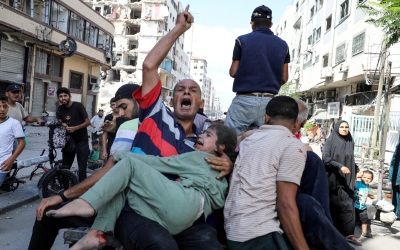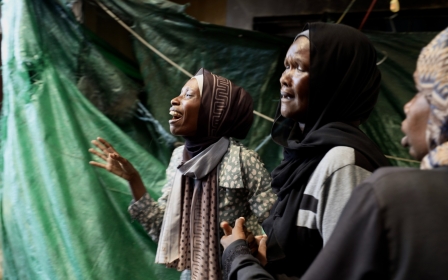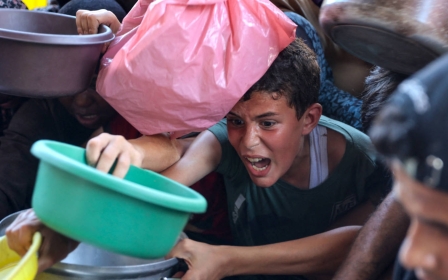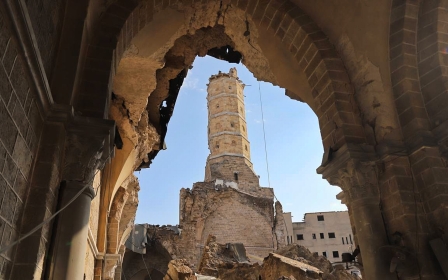Israel plan to expel Palestinians from north Gaza 'could last several months'
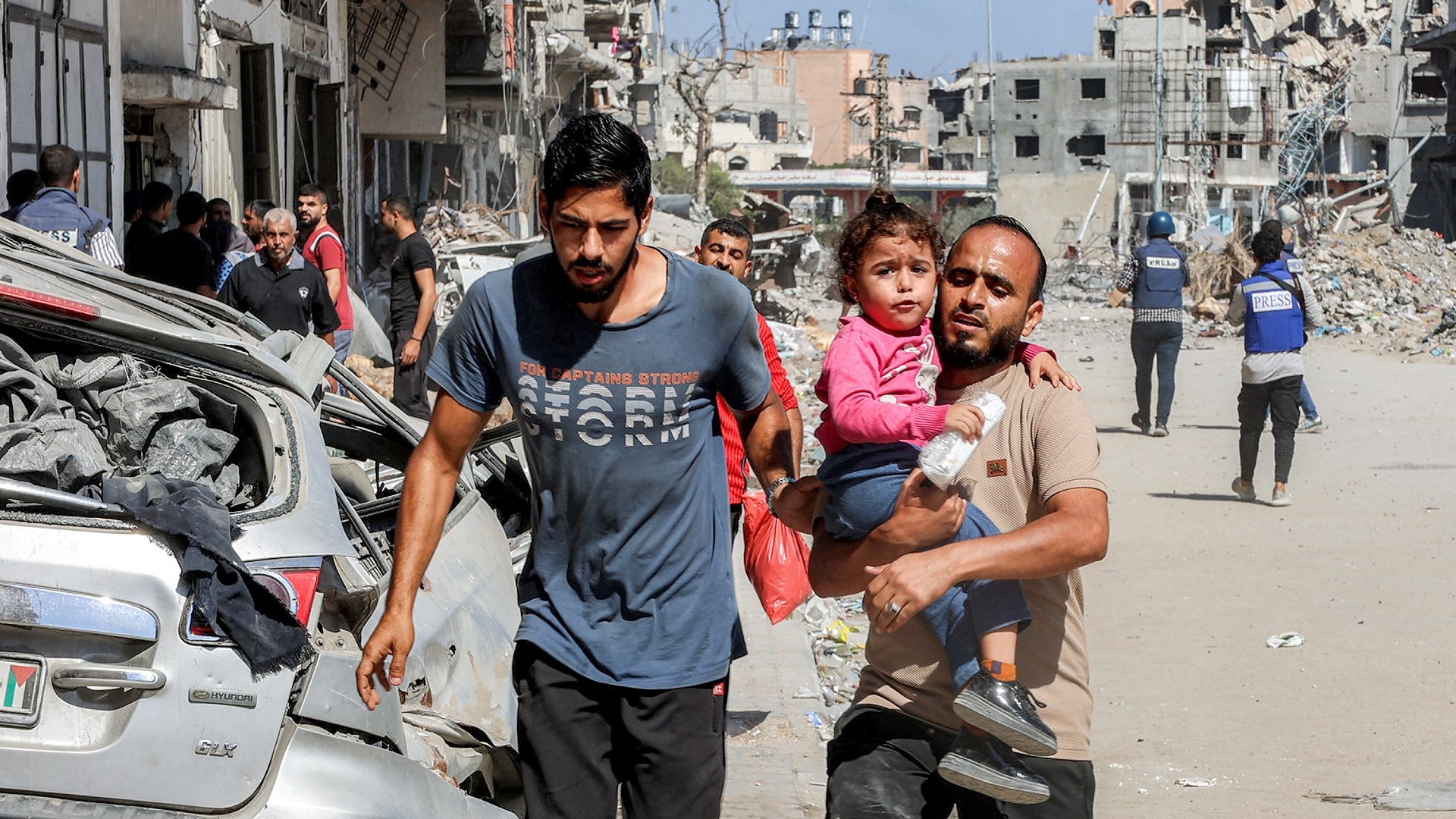
The Israeli military is enacting a plan that will effectively ethnically cleanse the Palestinian population in northern Gaza after a siege that could last months, according to an Israeli report based on conversations with military officials.
Conceived by retired Major-General Giora Eiland, the plan aims to empty northern Gaza of its 400,000 residents to make way for a "closed military zone".
"The general's plan," which was launched in an Israeli TV campaign in September, called for the ethnic cleansing of northern Gaza, warning that those that remain will face starvation.
"The right thing to do is to inform the approximately 300,000 residents who remained in the northern Gaza Strip… we are ordering you to leave," Eiland said last month.
"In a week, the entire territory of the northern Gaza Strip will become military territory."
New MEE newsletter: Jerusalem Dispatch
Sign up to get the latest insights and analysis on Israel-Palestine, alongside Turkey Unpacked and other MEE newsletters
According to a report published on Friday in the Israeli daily newspaper Yedioth Ahronoth, the Israeli military is now implementing a "scaled-down" version of the plan in the Jabalia refugee camp in nothern Gaza.
The military launched its assault on Jabalia on Saturday. The densely populated area has been encircled and besieged for a week, with no food or water coming in, where tens of thousands of people are trapped.
'In a week, the entire territory of the northern Gaza Strip will become military territory'
- Major-General Giora Eiland
According to the report, even though the "general's plan" aims to create conditions to force the population in Jabalia and nearby Beit Hanoun and Beit Lahia to flee south, most people have refused to leave their homes so far.
For months, Palestinians in Gaza have said there are no safe zones in the enclave.
The assault in the north, including the siege, is unlike raids conducted by the army in the previous year and could last for several months, the report said.
"We have eliminated more than 100 terrorists so far in the operation, but we are prepared to operate continuously here for several months as well," an Israeli military spokesperson told Yedioth Ahronoth.
In an analysis piece published by Haaretz on Friday, journalist Amos Harel said that there were two aims in Israeli military actions in northern Gaza.
“The declared goal of the operation there by the 162nd Division is to degrade Hamas' military networks, which regrouped during the months that the IDF withdrew from the northern part of the Stri” Harel reported.
He added that the other aim of the operation, “which was noted publicly only in passing”, was to clear the area of Palestinian civilians.
He noted that those attempts have “major significance in terms of Israel's future plans in the Gaza Strip, and in particular for the moves being concocted by the far right to ensure a lengthy occupation and the renewal of the settlement project”.
In 2005, Israel purportedly pulled out of Gaza and relocated around 8,000 Jewish settlers and Israeli soldiers living in 21 settlements around Gaza to the occupied West Bank.
Since 7 October, far-right groups and lawmakers have talked up plans to re-establish the illegal settlements in Gaza.
Trapped, besieged
Residents of Jabalia refugee camp told Middle East Eye that they have been trapped in their homes in northern Gaza for a week.
“We hear the sounds of bombing and random shells, but we don’t know where exactly,” camp resident Abed Ali told MEE on Thursday.
"The soldiers suddenly entered from all areas and closed off all the exits from Jabalia.
'The soldiers suddenly entered from all areas and closed off all the exits from Jabalia. People who went out were shot and killed'
- Abed Ali, Jabalia camp resident
"People who went out were shot and killed, their bodies were left in the streets. No one was able to reach them - no ambulance or civil defence."
Earlier this week, Israeli forces issued expulsion orders for three main hospitals in northern Gaza - Kamal Adwan, Al-Awda and the Indonesian hospital, giving them a day to flee.
The army threatened that if they didn't leave, they would face "the same fate as al-Shifa hospital, with destruction, killing and arrest”, according to a statement by the Palestinian health ministry.
The ministry reported that Israeli forces had besieged Kamal Adwan hospital in Beit Lahia, warning that it would imminently run out of fuel.
The hospital's director, Dr Hossam Abu Safia, told Drop Site News that he is refusing to flee.
"As long as there are patients, I won't leave," he said. "I've been here since the genocide started, and I am determined to continue helping my people."
Fierce battles have been taking place between Israeli forces and Palestinian fighters in northern Gaza.
Hamas’ armed wing released a video on Thursday which purported to show a tight ambush near the Saftawi junction in Jabalia in which an Israeli military vehicle was destroyed.
Israel's military announced on Thursday that three reservist troops were killed in Jabalia after stepping on an improvised explosive device (IED), days after another Israeli soldier was killed in similar circumstances.
Several other soldiers have been wounded in recent days, particularly from IEDs, according to Yedioth Ahronoth.
The number of Palestinians killed in Gaza since October last year surpassed 42,000 on Wednesday evening, according to the health ministry.
Middle East Eye delivers independent and unrivalled coverage and analysis of the Middle East, North Africa and beyond. To learn more about republishing this content and the associated fees, please fill out this form. More about MEE can be found here.


